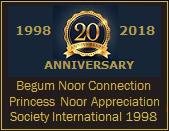




|
PRINCESS NOOR-UN-NISA INAYAT KHAN, George Cross, M.B.E., Croix de Guerre (with gold star). Heroine of the French Resistance during World War II. Member of SPECIAL OPERATIONS EXECUTIVE. Also an author of children's stories: "Twenty Jataka Tales Retold" |
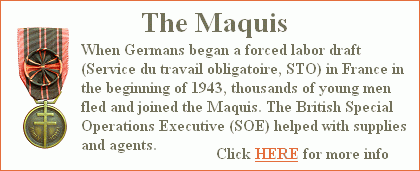
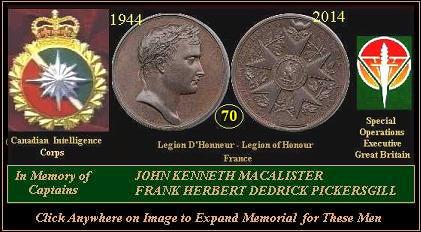
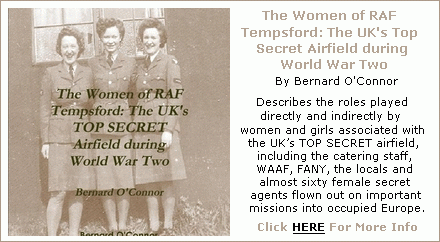


 "TOTAL WAR" by Peter Calvocoressi and Guy Wint. Published by: Allen Lane, The Penguin Press, London. P.1972 As resistance to Nazi occupation developed it involved not only the Resistance movements themselves inside occupied countries but also governments in exile (all of them in London except the Greek government which was in Cairo) and the organizations established with similiar aims by the British and American governments. The first of these in point of time, and for some time the most active, was the British Special Operations Executive (SOE) which was created in July 1940 as a department in the Ministry of Economic Warfare. The date indicated the need: to preserve or renew contacts with a continent from which Great Britain had been expelled and cut off. The Ministry indicated the prime aim: To injure Germany's war-making capacity by sabotage. The two together prescibed the method: to find, train and dispatch small groups of technically equipped demolitionists. At the beginning of the war the British government had made plans for interfering with Germany's supplies of iron ore from Sweden and oil from Rumania and although these had been attended by no success the notion of economic warfare had been embodied in a Department of State, and after Dunkirk, Great Britain's inability to do much else in Europe, combined with the emergence of Resistance in the following year and Churchill's decision to foster it, focused attention on the possibilites of sabotage. SOE set to work to find saboteurs with the right aptitudes and languages (They were recruited in French-speaking Canada and polyglot South America as well as among refugees from Hitler's Europe) and it eventually established sixty training schools for operations in Europe besides others for Asia. These schools sent 7,500 agents, mostly nationals of the countries concerned, to western Europe and 4,000, mostly British agents and military liason parties, to Italy and southeastern Europe. Almost at the outset these operations were extended from sabotage to intelligence. Many intelligence contacts had been broken by the retreat from the continent. In addition, military intelligence networks had been penetrated by the Germans before the war: in Holland, for example, the British Headquarters, which was next door to the house made famous in the first world war by Mata Hari, had been under surveillance since 1935 and all visitors to it had been regularly photographed as they went in and out. There was something of an intelligence vacuum and it seemed natural to ask SOE, which was organizing sabotage trips, to get its agents to do some intelligence work too. Unfortunately agents of the one kind are not necessarily the right people for work of the other kind, nor had they been trained for it, and the confusion of the two functions endangered SOE's work. It also endangered Resistance groups, since there were more agents around who had contacts with these groups and at the same time liable to be picked up by German counter-intelligence or to become unsuspectingly involved with double agents. A further extension of SOE's work occurred when subversion and insurrection were added to it brief. Churchill told Hugh Dalton, the Minister of Economic Warfare, that it was his business to "Set Europe ablaze". Prizing variety and unconventionality for their own sake, and stirred perhaps by the historical recollections of chouans, carbonari and klephts, Churchill welcomed the chance to revive the fighting spirit and fighting forces of Europe's nations. He wanted to summon them to make life hell for the Germans and, ultimately, to cooperate with the allies' regular armies when the time should come to return to the continent. 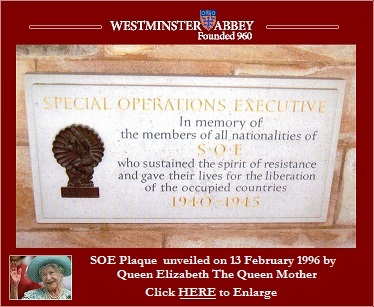 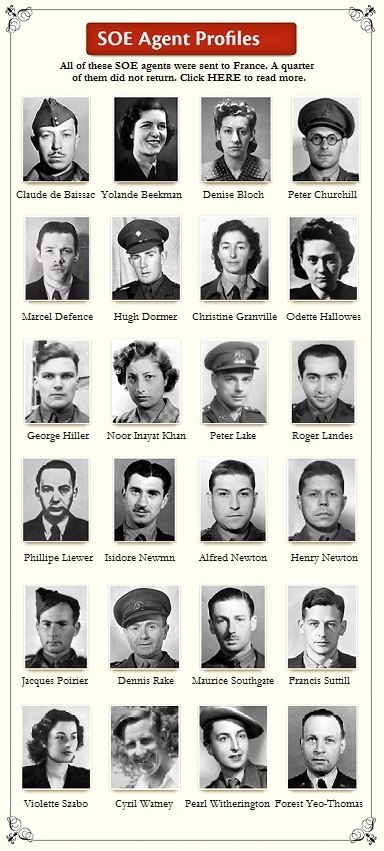 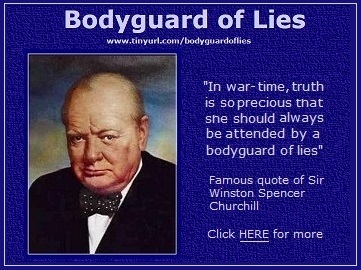 |




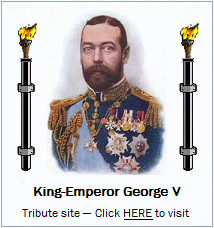




 |
View Caricature of the Adventures of Princess Noor and LINKS to other related sites |
 |
Official Documents of The Special Operations Executive |
 |
Imperial War Museum London search for Special Operations Executive |
 |
Special Operations Executive on Wikipedia for article and links for SOE |

